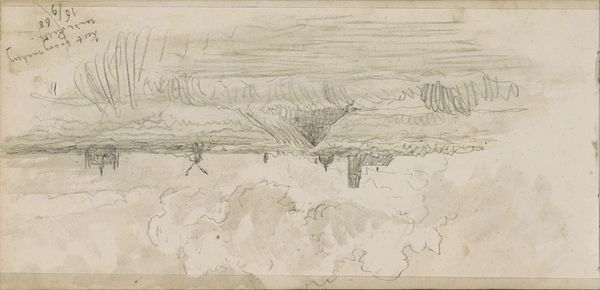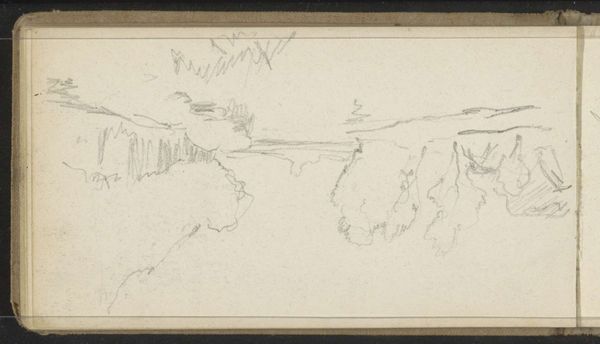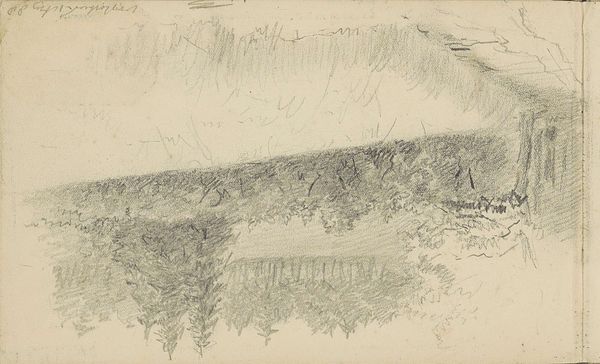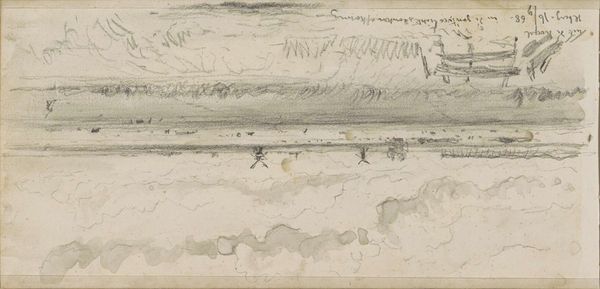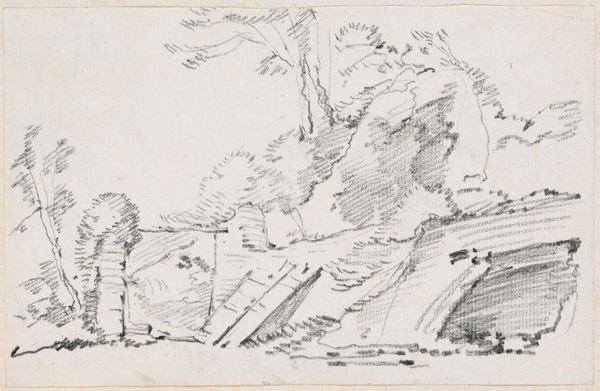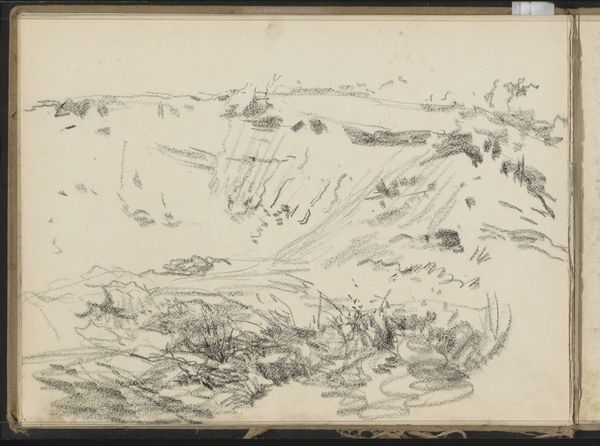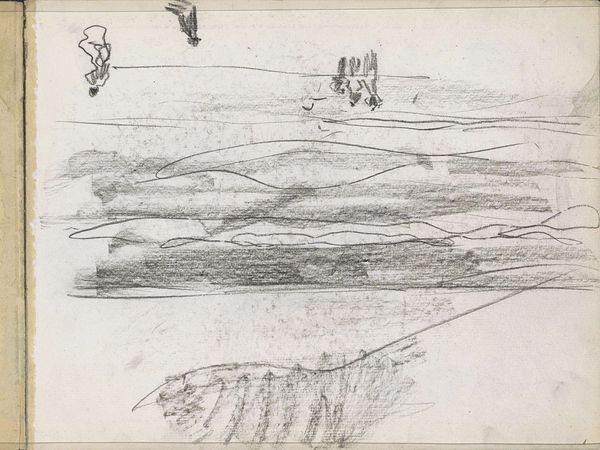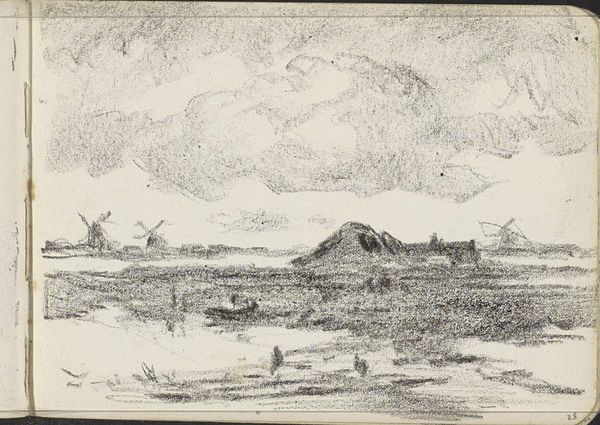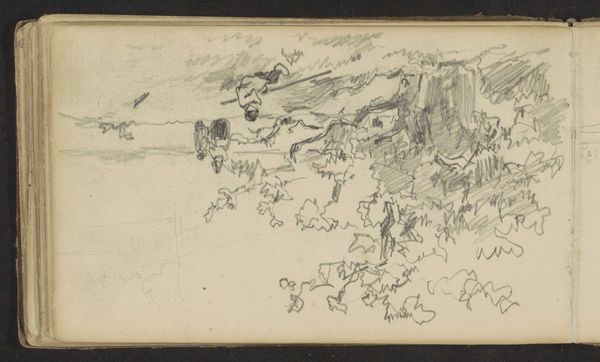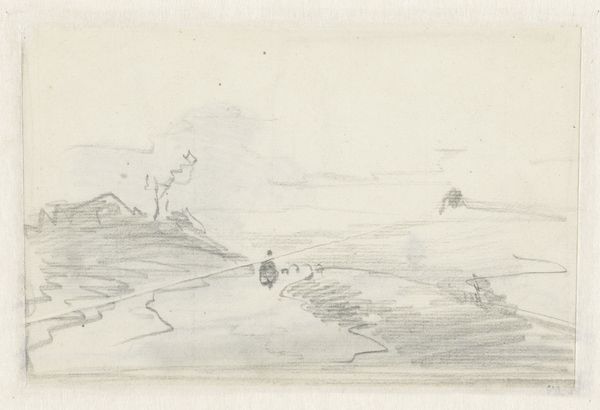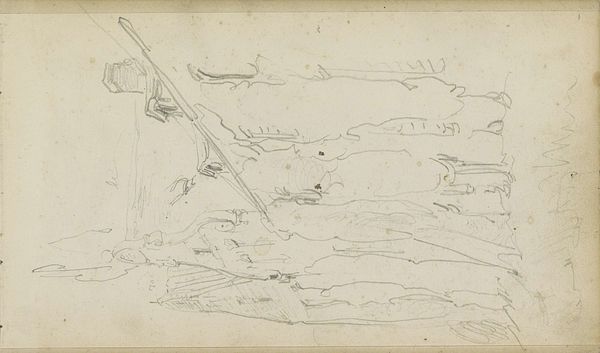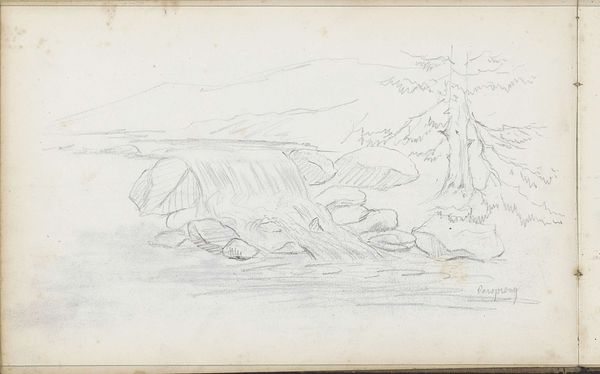
Landschap met molens en grazende koeien in Hillergerberg, nabij het graf van zoon Henri 1868 - 1869
0:00
0:00
drawing, pencil
#
drawing
#
pencil sketch
#
landscape
#
pencil
#
realism
Copyright: Rijks Museum: Open Domain
Editor: Here we have Johannes Tavenraat’s “Landschap met molens en grazende koeien in Hillergerberg, nabij het graf van zoon Henri,” created between 1868 and 1869. It’s a pencil drawing. There’s a distinct layering effect with what appear to be loosely drawn trees taking precedence. How might you read this piece, focusing on its visual qualities? Curator: Immediately striking is the pronounced division of space, achieved primarily through line and tonal variation. Observe how Tavenraat employs a distinct horizon line, above which rests a sky suggested by minimal hatching and the absence of intense shading, which distinguishes the background elements— are they trees or perhaps distant windmills? It seems he renders these background objects quite sparsely, a very linear technique to achieve that sense of receding space. And below that line? Editor: The density increases dramatically, there are defined groupings of what looks like rows of more trees with intense detail – much heavier shading giving them a visual prominence, even to the extent that they appear much closer. And, of course, there are shapes down front which appear to be soft, undefined cloudscapes. Curator: Exactly! We can consider how Tavenraat orchestrates contrast in density and line weight, thereby creating spatial depth through a formal interplay. Note the absence of any rigid, geometrical structuring elements to frame the whole scene. Instead, there are softer suggestions of framing at the very bottom. It is mostly atmospheric pressure giving us these layers rather than any attempt to draw it perspectivally with lines and so on. It really makes one wonder. Do these stylistic choices affect your perception? Editor: Absolutely, and perhaps I understand how the emotion in the name may relate more strongly to it now. Curator: Indeed, paying careful attention to how form dictates spatial relations enriches our experience of the art work. The visual syntax generates our appreciation, independent of any further narratives we might bring in.
Comments
No comments
Be the first to comment and join the conversation on the ultimate creative platform.
